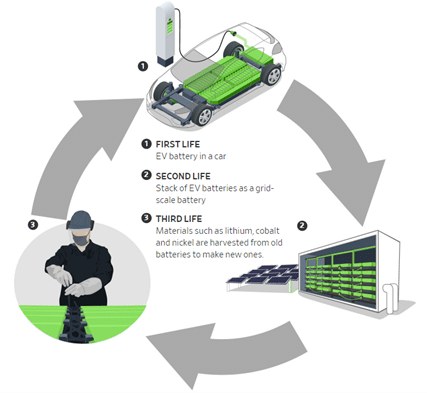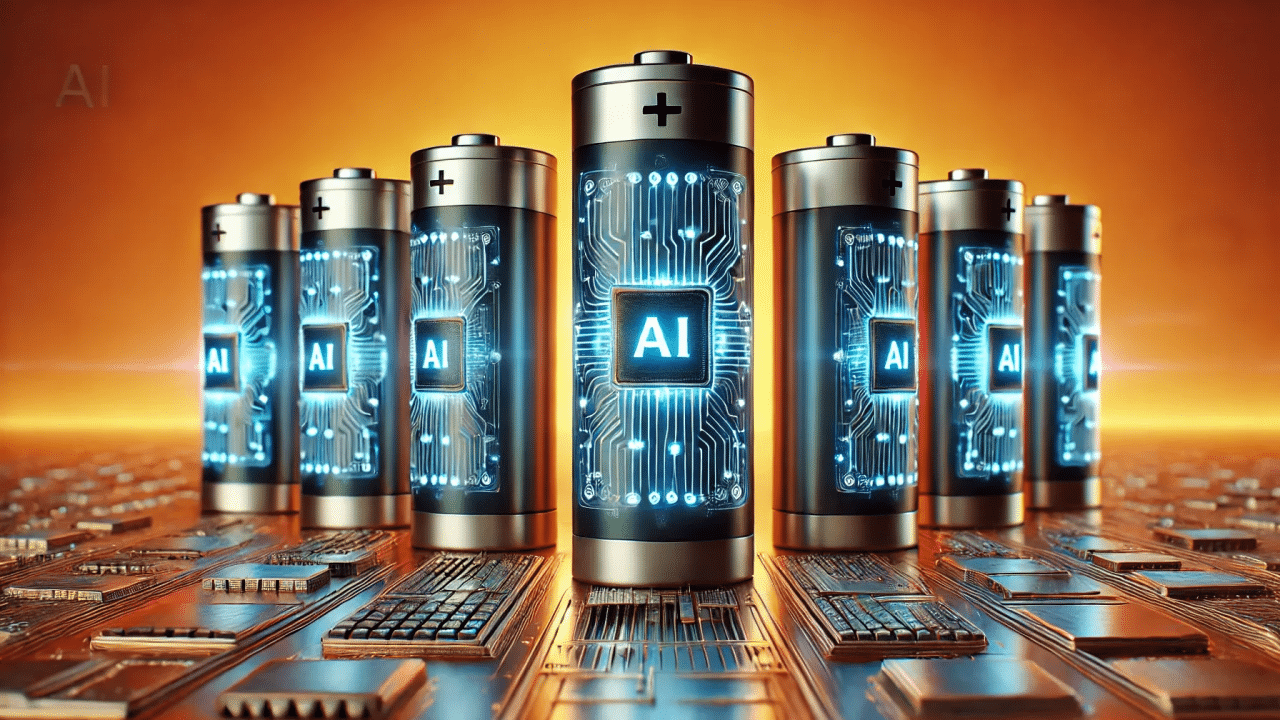Unlocking Second-Life EV Batteries: How AI Powers a Circular Energy Economy
Electric vehicles are a powerful symbol of a sustainable future. Their widespread adoption promises cleaner air and a reduced carbon footprint. Yet, this very progress introduces a new. Urgent challenge: what happens to the lithium-ion battery packs that power them once they no longer meet the demands of a vehicle? Disposing of these massive, energy-dense packs creates a significant environmental and logistical problem. Fortunately, a groundbreaking concept is rapidly becoming a reality: second-life EV batteries. When a battery’s capacity drops below the threshold needed for a car—typically around 70-80% of its original capacity. It still holds immense value. It can find new purpose in other applications.
However, the sheer scale of the problem is monumental. We must evaluate and manage millions of used battery packs, each with its own unique history and degradation profile. The answer lies in Artificial Intelligence (AI). AI not only helps us accurately determine a battery’s remaining capacity but also calibrates it for a new life, unlocking a powerful and profitable era of circular energy.
Why the “Second Life” is Crucial

Repurposing EV batteries offers profound benefits for both the environment and the economy.
Environmentally, it provides a critical solution to a looming e-waste crisis. By giving batteries a second purpose, we drastically reduce the volume of hazardous materials that would otherwise end up in landfills. This extends the lifecycle of valuable components and simultaneously decreases our reliance on virgin materials. The high demand for critical minerals like lithium, cobalt, and nickel places immense pressure on mining operations and supply chains. Reusing batteries directly offsets this demand, contributing to a more sustainable and responsible resource ecosystem.
Economically, it transforms a disposal cost into a new revenue stream. Used battery packs come at a much lower cost than new ones, making them an affordable energy storage solution for a wide range of applications. This drives down the cost of renewable energy projects and creates new business opportunities in the battery repurposing industry. Experts project that the second-life battery market will be worth billions of dollars in the coming decade, creating new jobs and fostering a new segment of the green economy. With the global EV market exploding, the number of batteries needing a second life will grow exponentially. Finding an efficient solution for them is an absolute necessity.
The Challenge of Evaluating Used Batteries
Before a battery pack can enter its “second life,” we must answer a core question with absolute precision: what is its remaining capacity, and how well can it perform? This is a far more complex task than it sounds.
Traditional, manual testing methods are both expensive and incredibly slow. They require full charge-discharge cycles, a process that can take weeks for a single battery pack. This approach is not only inefficient but also fails to provide a comprehensive picture. The results are often just a single, static number that offers no insight into the true health of individual cells within the pack. This lack of granular data makes it difficult to predict future performance and identify potential safety risks.
Manual testing is simply not scalable for the millions of units that will soon need processing. The costs of labor and specialized equipment for manual evaluation are prohibitively high, making the entire repurposing process economically unfeasible without a smarter, more automated approach. Furthermore, data about a battery’s history—including its temperature history, fast-charging habits, and specific driving conditions—is critically important. However, this data is often siloed, difficult to access, or simply discarded, leaving engineers to make critical decisions without the full story.
How AI Solves the Challenge of Second-Life Battery Management

Why is AI important?
When electric vehicle (EV) batteries reach 80% capacity, they are no longer suitable for vehicle use but can still be used for static applications such as grid energy storage, residential solar systems, or emergency charging. This is known as “second-life batteries”. However, accurately assessing the State of Health (SOH) and remaining lifespan of each battery is a major challenge. AI addresses this by analyzing large datasets to make precise and effective decisions.
The Role of AI in Battery Assessment
Predicting Battery Degradation
AI uses machine learning models to analyze historical battery data (such as temperature, charge/discharge cycles, and voltage) to accurately predict the future degradation rate of the battery’s capacity. This allows for a quick and more precise determination of SOH and remaining lifespan compared to manual methods.
Accuracy in Battery Sorting
One of the most important applications of AI is sorting batteries based on their SOH. By analyzing thousands of data points, AI algorithms can effectively sort batteries, separating those suitable for second-life applications from those that need immediate recycling, thereby optimizing the value chain.
This is where AI becomes a game-changer. Artificial Intelligence addresses these challenges by transforming a slow, physical process into a smart, data-driven system.
- Analyzing Historical Data and Predicting Health: Machine learning algorithms can process vast amounts of data collected from a vehicle’s Battery Management System (BMS). AI analyzes complex patterns in charging-discharging cycles, voltage fluctuations, and temperature gradients. By doing this, it creates a comprehensive “aging profile” for each battery. This allows AI to precisely estimate the battery’s state of health (SoH) without time-consuming, full-cycle tests. It can predict a battery’s remaining useful life and performance under various conditions with a level of accuracy humans cannot match.
- Automated Recalibration for New Applications: A battery designed for a car has different characteristics than one for static storage. Its internal parameters and capacity curve change over time. AI can recalibrate a battery’s BMS to reflect its new characteristics, optimizing it for its new role. This EV battery calibration process ensures the battery operates safely and efficiently as part of a home energy storage system or a grid-scale power bank. AI-driven systems can dynamically adjust charging and discharging protocols to maximize the battery’s new life, preventing premature degradation.
- Rapid and Automated Sorting: Based on the AI analysis, battery packs can be instantly categorized and sorted. Packs with sufficient capacity and health go directly to repurposing facilities. Packs that do not meet the criteria go straight to material recycling. This automated sorting optimizes the entire supply chain, saving an incredible amount of time and labor. It removes the guesswork and subjectivity from the process, ensuring every battery pack finds its highest-value purpose.
Real-World “Second-Life” Applications and a Future Vision
AI-calibrated batteries are already being deployed in a variety of powerful applications. They are becoming the backbone of energy storage systems that support the growth of renewable energy.
- Home Energy Storage: They serve as reliable backup power sources for homes or integrate with rooftop solar systems, allowing homeowners to store excess energy and reduce their reliance on the grid.
- Grid-Scale Energy Storage: Hundreds of battery packs can be combined to create massive “energy banks” that help stabilize the electrical grid. They provide essential services like frequency regulation and “peak shaving,” storing power during low-demand periods and releasing it during high-demand times.
- Mobile Backup Stations: They provide portable power for events or act as temporary EV charging stations in remote or off-grid locations.
The future vision is a global network of AI-managed battery farms. These systems will continuously optimize charging and discharging, making the grid smarter, more efficient, and more resilient. This creates a distributed network of energy storage that can respond instantly to demand fluctuations.
Conclusion
EV batteries are no longer a single-use product. Thanks to Artificial Intelligence, we can extend their lifespan, transforming them from a potential environmental liability into an economic and social opportunity. Second-Life EV Batteries, empowered by AI calibration, show that battery reuse is more than just a technical advancement; it is a strategic step towards a sustainable circular economy. It represents the marriage of technology and responsibility, helping us build a cleaner, greener future where we do not waste a single watt of energy.
Benefits & Impact
30-70%
Cost reduction for second-life batteries compared to new ones.
2x
Increase in the lifespan of each battery.
95%
Reduction of waste and environmental impact.



